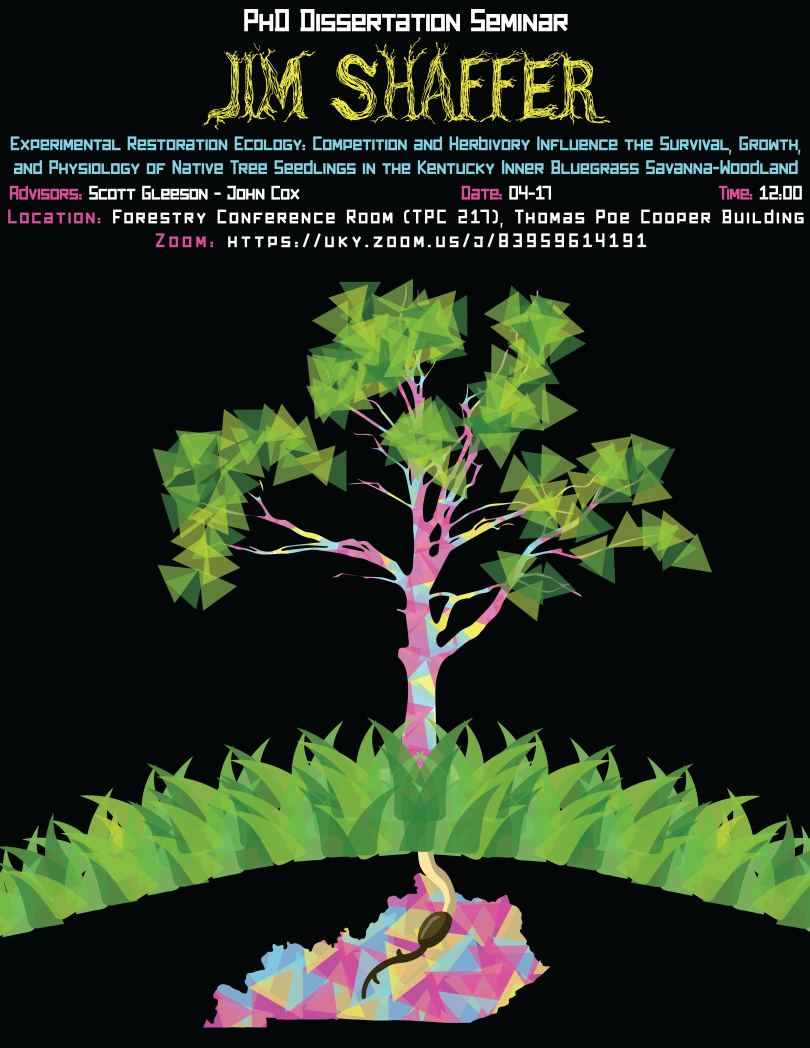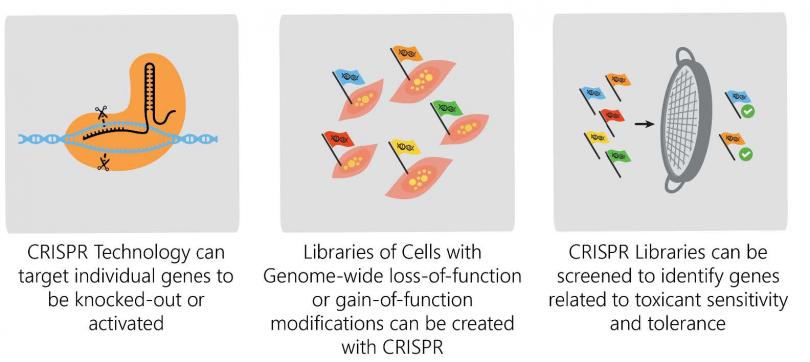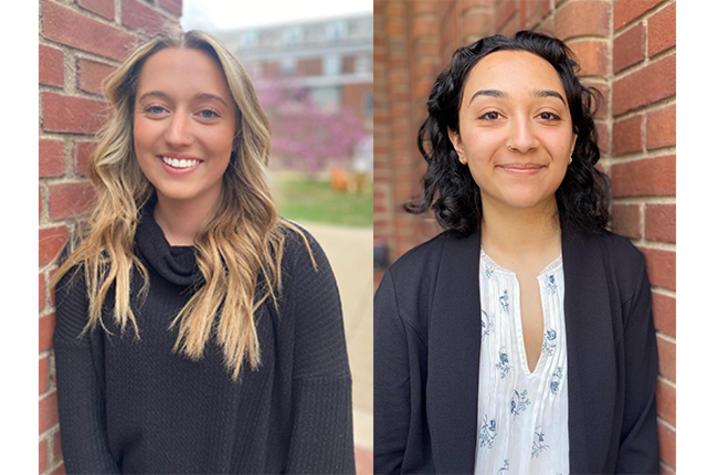UK Nu Circle of Omicron Delta Kappa honors A&S students
LEXINGTON, Ky. (April 20, 2023) — The University of Kentucky Nu Circle of Omicron Delta Kappa National Leadership Honor Society hosted its annual awards night on Tuesday, April 11, in the W. T. Young Athletic Auditorium. Among those recognized for the Maurice A. Clay award was Kameron Kraus, a student in the College of Arts & Sciences. In addition, A&S student Nora Sypkens received a Jerry D. Claiborne Scholarship.
"Experimental Restoration Ecology: Competition and Herbivory Influence the Survival, Growth, and Physiology of Native Tree Seedlings in the Kentucky Inner Bluegrass Savanna-Woodland"

"Functional Screening Approaches to Identify Cellular Toxicity Mechanisms"
 Dr. Christopher Vulpe | Vulpe Lab
Dr. Christopher Vulpe | Vulpe Lab
Bio:
Chris Vulpe, MD, PhD. is a Professor at the University of Florida, Gainesville in the Center for Environmental
and Human Toxicology. Dr. Vulpe received his MD and PhD from the University of California, San Francisco.
Dr. Vulpe’s group uses systems level approaches in eukaryotes from yeast to people to identify the functional
components that respond to and modulate the consequences of environmental stressors. Most recently, his laboratory is utilizing genome wide and targeted CRISPR screens to understand the mechanisms of toxicity of environmental chemicals. Dr. Vulpe is an author or co-author on >175 papers in peer reviewed journals and books. His group uses functional, genomic, and genetic approaches to provide insight into mechanisms of toxicity in diverse model systems including human models such as human cell culture, organoids, and rodents, as well as ecologically relevant organisms such as Daphnia magna.

Elizabeth “Beth” Elliott
Elizabeth “Beth” Elliott
Elliott conducted research as a high school student in the MSTC program at Dunbar High School, working with Susan Odom and Aman Kaur in the Department of Chemistry. Her work focused on the synthesis of shelf-stable radical cation salts and served as her capstone research project. After that period, restructuring of that lab meant that she was looking for a new location to continue research, whereupon a chance encounter with Robin Cooper of the Biology Department led to her taking a position in his lab.
Two A&S Students Selected for UK's Beckman Scholars SUCCESS Program

"Placing the Evolutionary History of Desmognathus Salamanders in Context: A Phylogeographic Approach"
Abstract:
Patterns of genetic variation do not arise in a vacuum but are instead shaped by the interplay between evolutionary forces and ecological constraints. Here, I use a phylogeographic approach to examine the role that ecology played in lineage divergence in the Desmognathus quadramaculatus species complex (Family: Plethodontidae), which consists of three nominal species: D. quadramaculatus, D. marmoratus, and D. folkertsi. Previous phylogenetic studies have shown that individuals from these species do not form clades based on phenotype. My approach to reconciling phylogenetic discordance was two-fold, using (1) genome-wide markers to provide insight into the relationships among lineages and (2) geographic and climate data to provide context for patterns of genetic diversity. First, I obtained genome-wide nuclear markers using double digest restriction-site associated DNA sequencing (ddRAD) to examine whether two morphologically divergent species, D. marmoratus and D. quadramaculatus, represent independently evolving lineages. Phylogenetic, population structure, and model testing analyses all confirmed that D. marmoratus and D. quadramaculatus do not group based on phenotype. Instead, I found that there were two cryptic genetic lineages (Nantahala and Pisgah) that each contained both phenotypes. Additionally, ecological niche modeling showed that the two genetic lineages primarily occupy geographic areas with significantly different climates, suggesting that climate may have played a role in divergence. Next, I assembled loci from publicly available sequencing data using a draft transcriptome of Desmognathus fuscus as a reference to assess the three nominal species in the quadramaculatus species complex across their entire range. I used phylogenetic and population structure analyses, alongside haplowebs and conspecificity matrices, to determine if the loci supported the hypothesis that the phenotypes represent multiple independently evolving lineages within the broader genetic clades found in the previous chapter. I found that the loci were not informative enough to determine whether the phenotypes had a genetic basis in Pisgah, but did support genetic divergence between phenotypes in Nantahala. Finally, I used ecological niche models (ENMs) and resistance modeling to place the genetic results and phenotypic diversity within the context of time and space. I found that though the quadramaculatus and marmoratus phenotypes were nearly indistinguishable in niche space in the present day, they were projected to occupy different geographic areas in the past and future. The southern portion of the study area had areas of high habitat suitability from the Last Glacial Maximum (~22 kya) to the present, which aligns with the higher genetic divergence between groups in Nantahala. Anthropogenic land use changes reduced habitat availability but likely did not drive genetic divergence in the past, and may be of more consequence to genetic diversity than climate change over the next 50 years. Like many taxa that underwent adaptive radiations, the evolutionary history of Desmognathus has been obfuscated by high rates of within-species phenotypic diversity and shared morphology between distantly related lineages. My findings emphasize the importance of interrogating complex patterns of genetic variation within the context of the dynamic, heterogeneous landscapes in which they arise.
UK Substance Use Research Event to highlight cannabis research
By Elizabeth Chapin
The University of Kentucky is hosting its fifth annual Substance Use Research Event (SURE) April 24 in the UK Gatton Student Center. This free event showcases translational research conducted at UK focusing on substance use and substance use disorder.
Cannabis research is a focus of this year’s event, which will include an update on the new UK Cannabis Center, a breakout session on emerging cannabis research, and a keynote from a national cannabis expert.

